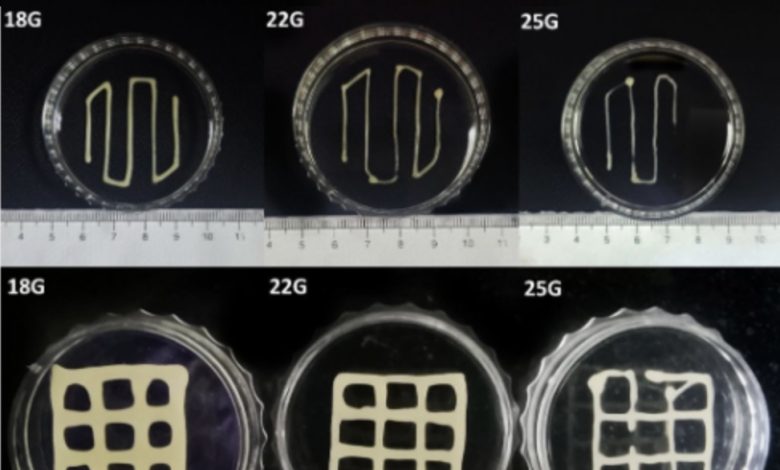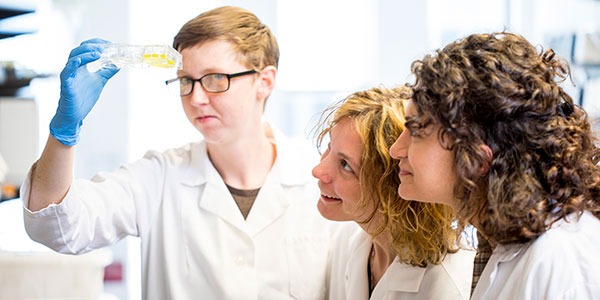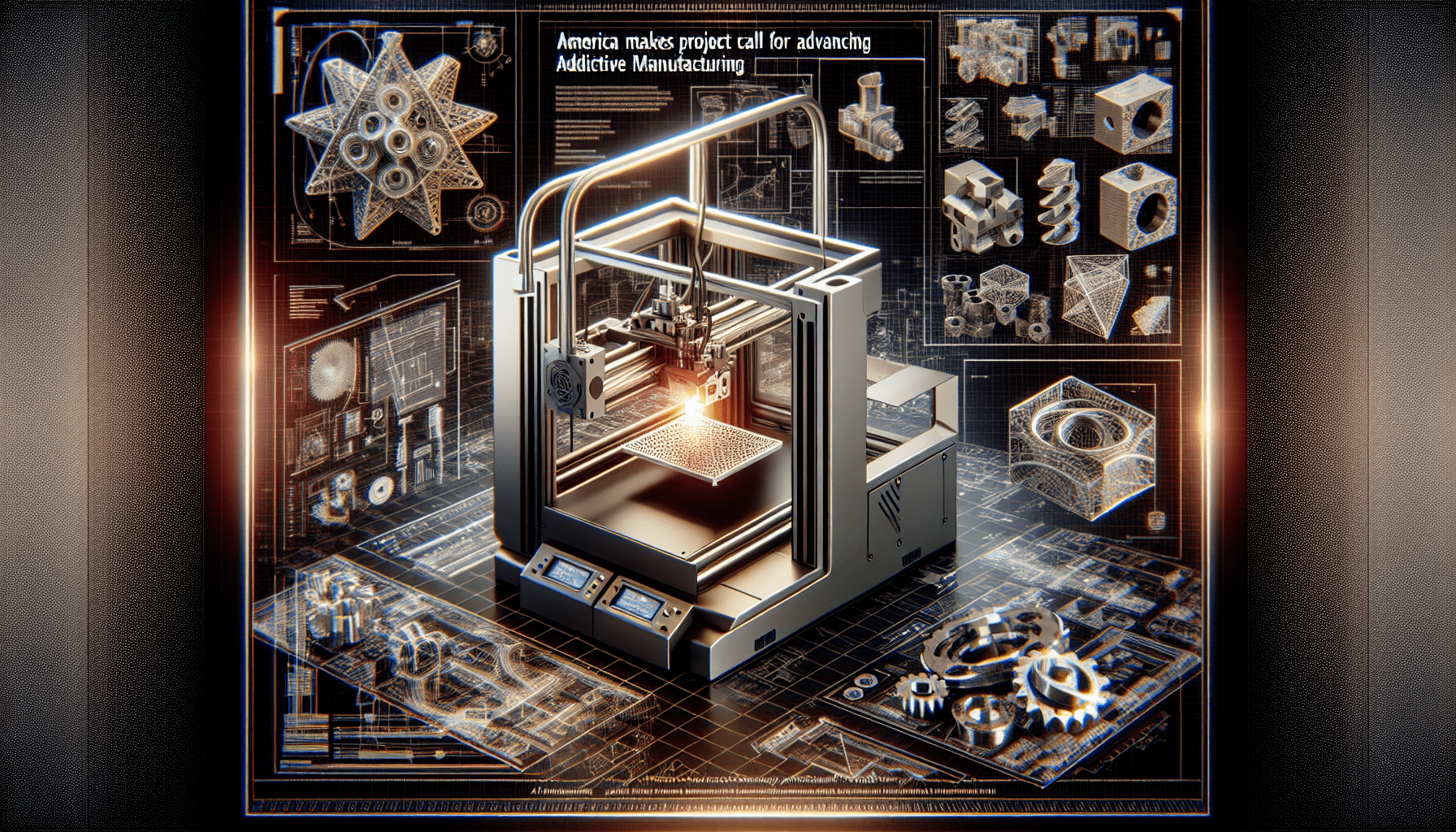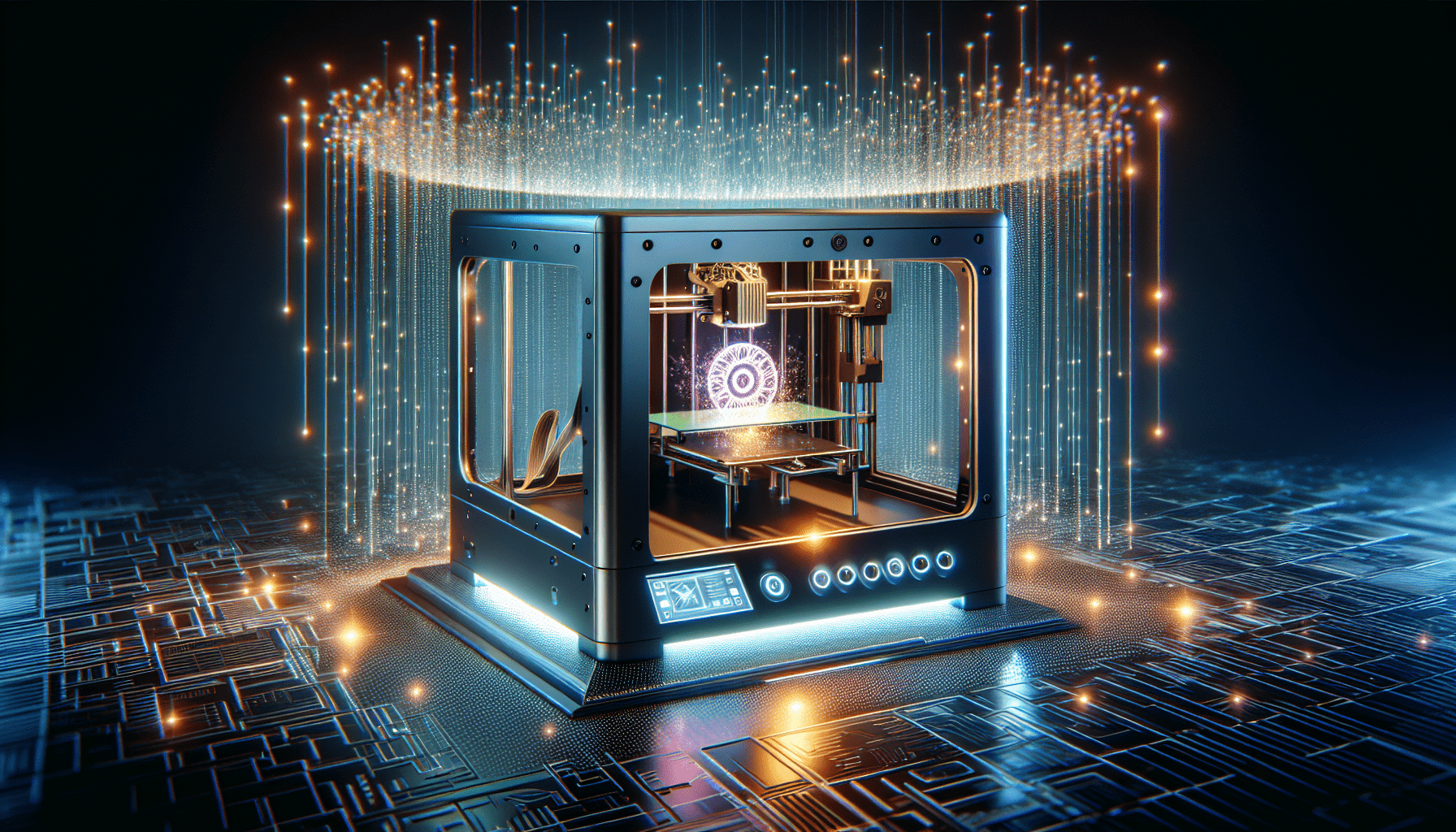Creality K1C 3D Printer, 2024 New Version 600mm/s High-Speed Auto Leveling Clog-Free Robust Direct Extruder K1 SE Upgraded 3D Printer with AI Camera 300°C Printing Support Carbon Fiber Filaments
$559.00 (as of June 2, 2025 19:53 GMT +00:00 - More infoProduct prices and availability are accurate as of the date/time indicated and are subject to change. Any price and availability information displayed on [relevant Amazon Site(s), as applicable] at the time of purchase will apply to the purchase of this product.)Have you ever wondered if science could one day create artificial organs specifically tailored for individuals suffering from chronic conditions? Imagine living in a world where lung transplants and other organ replacements are no longer limited by donor availability. Well, that future might be closer than you think. In an astounding breakthrough, researchers have developed a mucus-based bioink to 3D print lung tissue. This innovation could revolutionize how we study and treat chronic lung conditions.

$30 off $400+ Anycubic Products with code AC30OFF
Researchers 3D Print Lung Tissue with Mucus-Based Bioink
The Struggles of Chronic Lung Conditions
For people suffering from lung diseases like chronic obstructive pulmonary disease (COPD) and cystic fibrosis, everyday life is full of challenges. Medications and treatments are plentiful but fall short of offering a cure. Transplants are a rare and highly sought-after option, but donor organs are in limited supply. To complicate matters further, the traditional approach of testing new treatments often involves animal models, which are not always accurate in replicating human lung conditions. This gap between animal testing and human application has led scientists to seek alternative methods.
Bioengineers to the Rescue: The Quest for Better Models and Implants
Bioengineers have been navigating the uncharted waters of lab-created lung tissues to develop more accurate and efficient research models. One of the most promising approaches involves 3D printing human tissues using bioinks. However, finding the right bioink has proved to be a daunting task. Enter Ashok Raichur and his team of dedicated researchers, who aim to solve this problem by creating a mucus-based bioink.
The Magic of Mucus: A New Frontier in Bioprinting
Mucin, a critical component of mucus, hadn’t been widely explored in the realm of bioprinting. Interestingly, mucin shares a structural resemblance with proteins that promote cell growth. To harness its potential, the researchers modified mucin into methacrylated mucin (MuMA). By mixing MuMA with lung cells and adding hyaluronic acid—a natural substance found in connective tissues—they created a bioink with the right viscosity and cell growth properties.
Crafting the Bioink
To better understand this ground-breaking innovation, let’s break it down:
| Component | Function |
|---|---|
| Mucin | Modified to Methacrylated Mucin (MuMA), it serves as the main ingredient. |
| Lung Cells | Combines with MuMA to form the base of the tissue. |
| Hyaluronic Acid | Adds thickness and aids cell adhesion and growth. |
This potent combination was then used to print test patterns. These patterns were exposed to blue light to cross-link the MuMA molecules, creating a stable, porous gel that could absorb water, ultimately helping the cells survive and thrive.
Bringing the Printed Structures to Life
After developing the bioink, the team focused on creating a conducive environment for cell growth. The printed structures featured interconnected pores allowing for the free diffusion of nutrients and oxygen, which are vital for cell growth and the formation of lung tissue. Remarkably, the printed structures were non-toxic and biodegradable. Over time, they would allow new lung tissue to replace the printed scaffold naturally.
Potential Applications and Implications
The applications of this mucus-based bioink are far-reaching. Besides potentially serving as implants that could morph into new lung tissue, the bioink also opens the door to creating 3D lung models. These models would be invaluable in studying lung diseases and testing new treatments, reducing our reliance on animal models and making the drug development process more efficient and accurate.
The Broader Impact: A New Era in Medical Research
Shaping the Future of Organ Transplants
This advancement could be the game-changer that obstruction-free organ transplants have been waiting for. Imagine an era where the organ donor list is obsolete because we can print customized, compatible organs for all in need. By gradually replacing the printed scaffold with natural tissue, patients may experience quicker recovery times, fewer complications, and a dramatically improved quality of life.
Transforming Drug Development
Creating human-like lung models using mucus-based bioink will transform how we study diseases and develop treatments. Researchers would have access to more precise models that replicate the complexities of human lung tissue, enhancing the relevance and reliability of their findings. This change would expedite the drug development process and reduce the costs associated with preclinical trials, keeping the focus on developing effective treatments.
Moving Beyond the Lung
Although the focus has been on lung tissue, the principles behind this research could be applied to bioprinting other organs and tissues. Imagine a world where heart, liver, or kidney tissues could also be printed and used for transplants or research. This multidisciplinary application could reshape the very field of medicine, bringing us closer to a future where organ scarcity is a thing of the past.
Tackling Ethical and Regulatory Issues
Of course, with great technological advancements come ethical and regulatory challenges. The implications of creating tissues and organs in a lab will undoubtedly spark debates and require updated regulations. Questions about the long-term safety of bioprinted organs and their acceptance in mainstream medicine will need addressing. However, the potential benefits could outweigh the hurdles, leading to a paradigm shift in medical science.

Buy Photon Mono M5 Get Free 1KG Resin
A Closer Look at the Research
The Importance of Precision
The team’s paper, “3D Bioprinting with Visible Light Cross-Linkable Mucin-Hyaluronic Acid Composite Bioink for Lung Tissue Engineering,” published in ACS Applied Bio Materials 2024, provides comprehensive insights into this technology. Their meticulous approach in modifying mucin and combining it with hyaluronic acid showcases the importance of precision and innovation in developing effective bioinks.
The Role of the American Chemical Society (ACS)
The American Chemical Society (ACS) has been instrumental in disseminating this breakthrough research. Their platform facilitates the sharing of pioneering studies, helping researchers worldwide stay informed about the latest advancements in the field. This collaborative environment fosters continuous progress and encourages cross-disciplinary innovations.
The Road Ahead: Future Research and Development
While the initial results are promising, continued research is necessary to refine this technology further. Future studies will likely focus on perfecting the bioink formulation, optimizing the printing process, and conducting extensive clinical trials to ensure safety and efficacy. Through incremental advancements, the dream of customized, bioprinted organs will inch closer to reality.
The Bigger Picture: How 3D Printing Is Revolutionizing Medicine
Beyond Lung Tissue: Other Projects in the Pipeline
3D printing has been a game-changer across various medical fields. Researchers are also working on bioprinting other tissues and organs, such as hearts, kidneys, and blood vessels. The versatility and potential of this technology know no bounds.
Breaking Down Barriers to Treatment
By making organ replacement more accessible and less dependent on donor scarcity, 3D printing can break down barriers to treatment. Patients in need of organ transplants will have better odds, reduced wait times, and improved overall outcomes.
Financial Implications: Cost and Accessibility
Although initial development costs might be high, 3D printing technology has the potential to lower long-term healthcare costs. With fewer complications and quicker recovery times, the financial burden on healthcare systems could be significantly reduced.

Collaborations and Partnerships: Accelerating Progress
Industry-Academic Partnerships
Collaborations between academic institutions and industry leaders are crucial in accelerating the development and application of 3D printing in medicine. Companies provide the technical expertise and resources, while academic institutions contribute the research foundation.
Government Support and Policies
Government support through funding and favorable policies can further enhance the growth of this field. Encouraging innovation and streamlining regulatory approvals will be key in bringing these advancements to mainstream medical practice.
Conclusion: A Glimpse into the Future
In summary, the development of mucus-based bioink for 3D printing lung tissue is a monumental step toward transforming how we study and treat chronic lung conditions. This innovative approach holds immense promise for creating accurate disease models, developing effective treatments, and potentially providing customizable, bioprinted organs.
As we stand on the brink of this new era, the potential applications extend far beyond lung tissue, poised to revolutionize the entire field of regenerative medicine. It’s a future filled with hope and possibilities, where cutting-edge science and technology converge to improve lives and bring us closer to previously unimaginable medical advancements.
So, the next time someone ponders the future of organ transplants and treatments for chronic conditions, remember that the answers may well lie within the realms of 3D bioprinting and the pioneering spirit of researchers like Ashok Raichur and his team. The possibilities are endless, and the future is bright.
$30 off $400+ Anycubic Products with code AC30OFF









